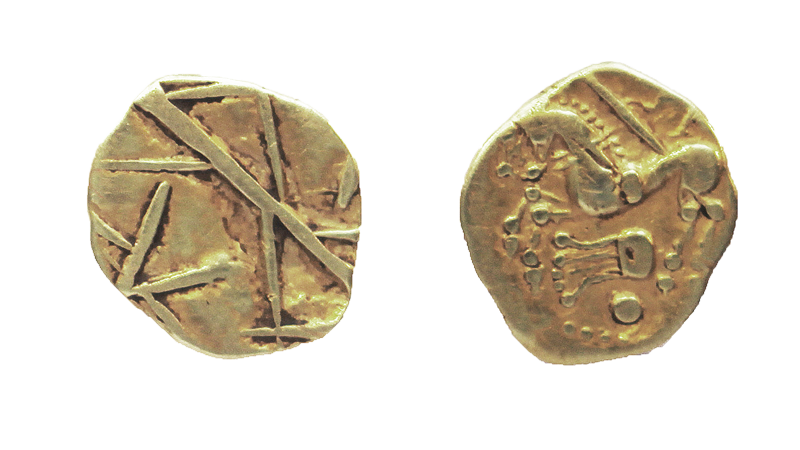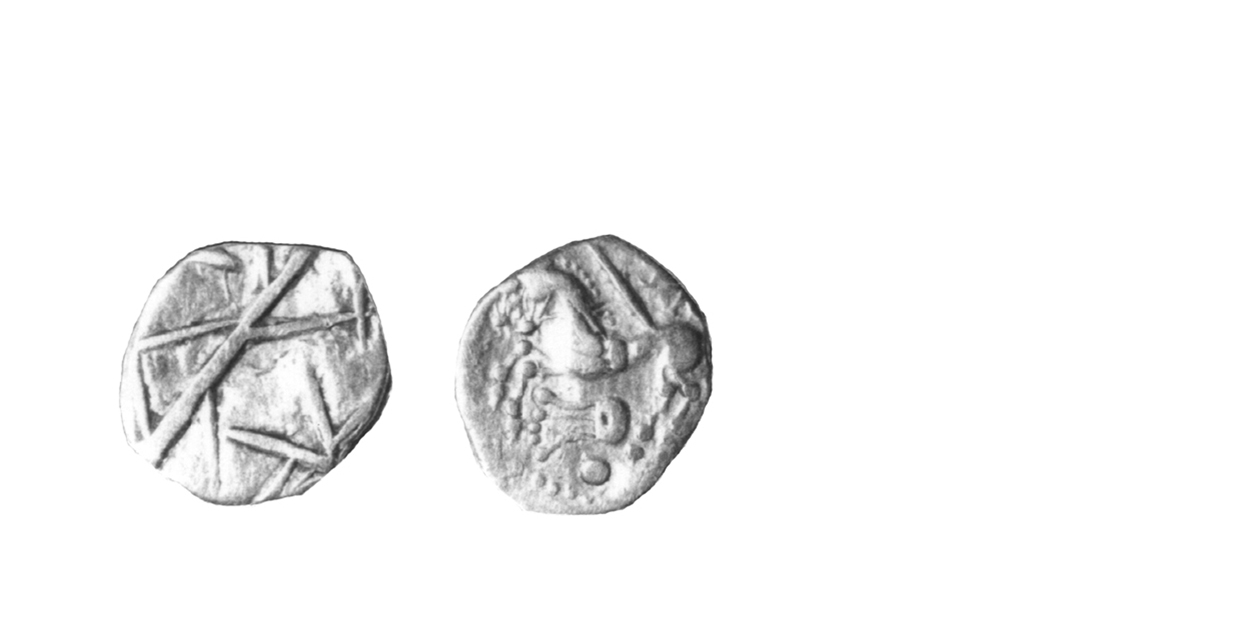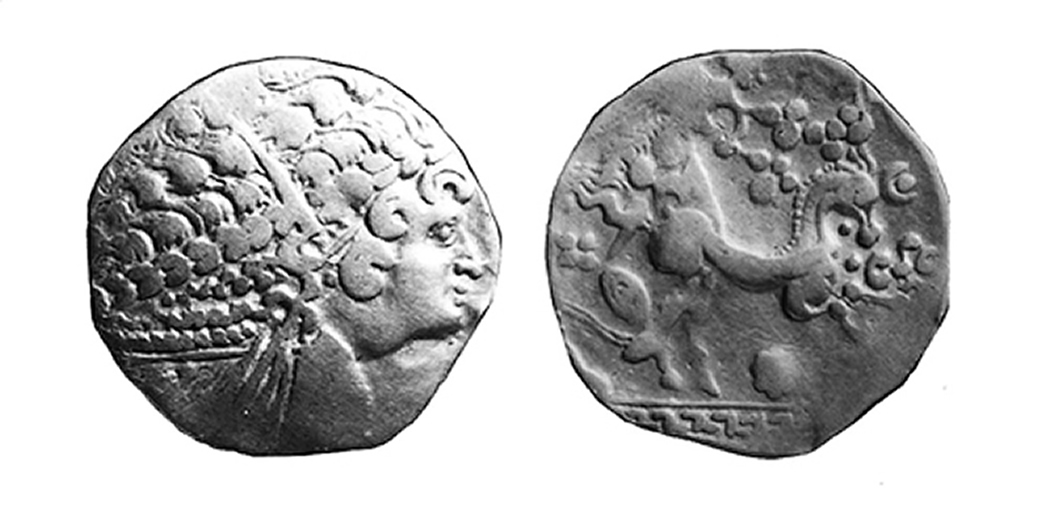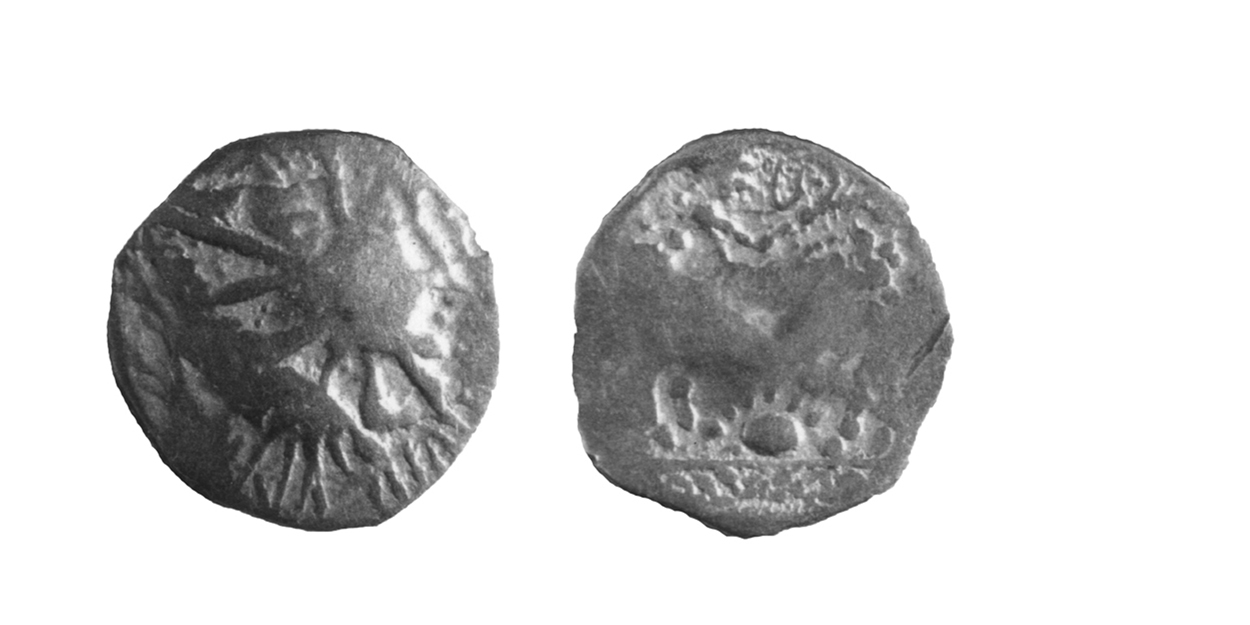
History
First Imported Coins (Info)
Sometime around 125 BC., two types of imported gold coins appeared in southeast Britain: the Large Flan Type of the Ambiani and the Defaced Die Type of the Caletes. The attribution of the Defaced Die Type to the Caletes is not entirely certain because the original dies may have been Ambianic in origin. In any event, these tribes occupied the coastal districts opposite Kent and were ideally situated for controlling trade and social interaction cross-Channel. Consequently, the presence of their coins in Britain probably reflected trade and other ties. Modern findspots of the coins indicate the tribes had links with the Atrebates/Regni, Trinovantes/Catuvellauni and the Cantii (8). There is some difference in the use of the coins, however, since the Ambianic link used more staters than quarter staters, whereas the Caletic one used mostly quarters. Indeed, Defaced Die Type staters are extremely rare and almost all have British findspots. The difference in use suggests the nature of the trade was different, but there is no proven explanation for the phenomenon.
The Large Flan Type, the largest and heaviest coin used in Ancient Britain, circulated in considerable numbers. The types – a head of Apollo on the obverse and a horse and chariot on the reverse – were ultimately derived from the staters of Philip II of Macedon. However, the Ambiani were not content to copy the designs slavishly. The Celtic spirit demanded a flowing transformation of the image to produce a masterpiece of abstract beauty. The design, several copying-stages from the Macedonian original, became fully Celticized. The Apollo head, though still naturalistic, expanded to fill the entire surface of the die and overspilled the edges of most flans. The obverse was dominated not by the face, but by the lively pattern of the god's curling hair and laurel wreath.
The horse on the reverse, even more abstract in form, was shown with disjointed legs, whilst the charioteer now floated freely above the animal. The surrounding field, ornamented by a series of pellets and lines, had a crude flower-motif springing from the ground all these details utterly foreign to the Macedonian original.
These two varieties, in which the head and horse faced either right or left in unison, appear to have been used simultaneously because they have the same standard weight. Two mules, one head-right/horse-left, the other head-left/horse – right were once thought to prove the contemporaneity of the types, but both have proven to be modern forgeries (9). Genuine staters are almost always found worn to a great degree – they evidently saw heavy use over an extended period. perhaps 30 or 40 years.
The staters and quarter staters of the Defaced Die Type are slightly smaller in diameter than the Large Flan Type, but are thicker and thus have the same standard weight (10). On the reverse, the horse is still recognizable as an animal, but is stylized to a greater degree than on the Ambianic coins. The head of Apollo on the obverse is obliterated by a series of crude, deliberate chisel cuts to the die. Two varieties circulated: with the first, a normal Large Flan Type die was defaced, because remnants of the Apollo head can be detected between the chisel cuts (11). With the second, an unusual thing happened – the chisel cuts were made on a blank die. Evidently, the defaced image had become a standard design feature; when new dies were needed, the motif was retained.
The retention of the chisel-cut motif could indicate several things. First, the Celts may have used these particular coins as money. Often, coins of high intrinsic value are struck with minimal design changes over time. The reason for conservatism is that continuity facilitates acceptance; people are reassured by familiarity with the design. If acceptance had not been an issue, there would have been little reason to continue the chisel-cutting practice. Second, the decision to obliterate the head of Apollo in the first place suggests some important event necessitated the change – a schism between the Caletes and some other group, for example. It is possible the Defaced Die Type's appearance in Britain chronicles not only trade or social contact, but a movement of people from the Continent in the late Second Century BC.
Next section: Later Imported Types



